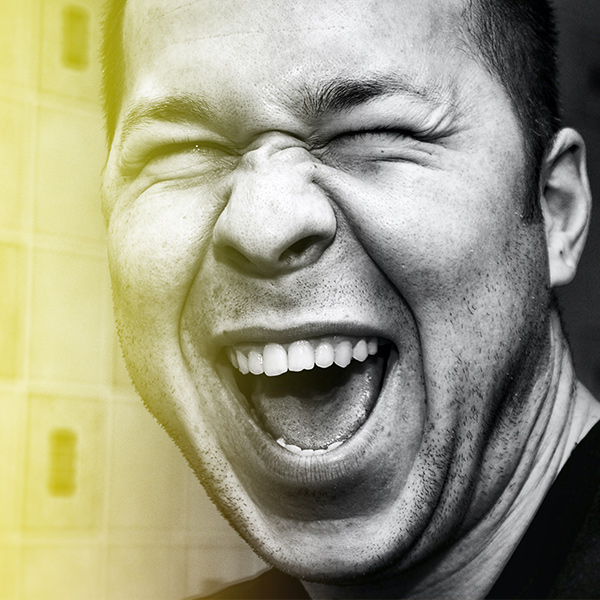From Doer to Decider: Moving from Individual Contributor to Leader

No one tells you how strange it can feel.
You’ve just been promoted. On paper, it’s a big win… And you should feel proud.
But in practice, there’s something else simmering beneath the excitement: uncertainty. Maybe even a little fear.
After all, you’ve spent years honing your craft, becoming the go-to person who gets things done. Now, almost overnight, the game has changed.
Suddenly, success isn’t just about your output anymore. You’re responsible for a team. Instead of just delivering, you’re also deciding and directing. And that shift is bigger than most people talk about.
Moving from individual contributor to leader is one of the most profound and often disorienting transitions in a career. It’s not just a change in job scope but a shift in identity, in mindset, in what drives your sense of worth at work.
If you’re feeling unsure of how to lead without losing what made you great in the first place, you’re not alone. And you’re in the right place.
In this blog article, we’ll unpack why moving from individual contributor to leader can feel so hard, explore the mindset changes needed to thrive, and give you practical tips to grow into your new leadership identity without losing yourself along the way.
Understanding the Role Shift: Moving from Individual Contributor to Leader
Walking away from owning every task to empowering a team feels unnerving. Many face identity clashes: you’re no longer “the fixer” but “the guide.”
Furthermore, imposter syndrome often kicks in, just like in The Straits Times piece, “Feel like a fraud? You are part of a very large club,” which highlights how even high‐achievers doubt themselves.
Well, your feelings are totally valid.
One of the biggest surprises for many new leaders is how fundamentally different the role of a leader is from that of an individual contributor.
As an individual contributor, your value was measured by how well you executed tasks, solved problems, and delivered results on your own. You were the expert. The doer. Your sense of success often came from being dependable, detail-oriented, and deeply in control of your own work.
But as a leader, the focus shifts. Your success is now defined by how well your team performs. You move from doing the work to enabling others to do their best work.
That means guiding, supporting, and sometimes getting out of the way. It’s less about having the right answers, and more about asking the right questions. Less about perfection, and more about progress.
This transition can feel deeply uncomfortable, especially for those who took pride in being highly capable and hands-on. But understanding this difference is the first step to showing up with clarity and confidence in your new role.
Mindset Shifts Every New Leader Must Embrace
Stepping into leadership is both about learning new skills and unlearning old habits. The strengths that made you a high-performing individual contributor may not serve you in the same way as a leader.
To lead well, you also need to recalibrate your relationship with control, success, and self-worth at work. Here are three core mindset shifts to help anchor your transition.
From Doing to Delegating
Delegation isn’t about offloading work, but about building capability. You grow by creating space for others to grow too.
From Detail to Direction
You may not have all the right answers, but you’re able to see the course and help others find clarity.
From Expertise to Empowerment
The real performance uplift comes from trust and the transfer of details and control to others.
Common Pitfalls in the First 90 Days
The first few months in a new leadership role can feel like walking a tightrope as you’re trying to prove yourself while figuring things out behind the scenes. It’s a delicate balance, and it’s easy to slip into habits that feel safe but may actually hold you back.
The truth is, most new leaders stumble. This isn’t because they aren’t capable, but rather, they’re navigating unfamiliar terrain without a map.
Here are some of the most common traps to watch out for, and how to gently steer yourself back on course.
- Micromanaging because you’re used to doing it all
- Avoiding tough talks to preserve harmony
- Decision fatigue from overthinking every move
- Prioritising being liked over being respected
Quick Fixes: Set clear expectations, schedule regular feedback, and practice emotional self-awareness. A little pause can ensure decisions don’t overwhelm you.

Build New Leadership Muscles: From Planning to People
One of the most important shifts in leadership is that the work becomes less about managing tasks and more about managing people.
That doesn’t mean project planning or execution becomes irrelevant. It means your focus now expands to include things that are harder to measure but far more powerful: like trust, morale, clarity, and team cohesion.
To lead well, you need to develop new muscles, such as emotional intelligence. That includes being able to read the emotional temperature of your team, navigate tensions before they escalate, and give feedback in ways that build. It also means learning to regulate your own emotions, especially when things don’t go to plan.
Another muscle is decision-making. As a leader, your choices carry more weight. You won’t always have perfect information, and you’ll often need to make calls that affect others.
That can feel heavy. But indecision is its own decision… One that can stall your team’s momentum. The more you practise making clear, timely decisions, the stronger that leadership muscle becomes.
We once worked with a client – a newly promoted team lead in a creative agency – who struggled to shift from “being liked” to “being effective.” Her natural instinct was to avoid conflict and over-accommodate, fearing that taking a stand might make her seem bossy or cold.
Through our coaching at The Happy Mondays Co., we unpacked where that belief came from and how it was costing her not just her energy, but impact. She gradually learned that saying no, setting direction, and giving feedback weren’t acts of rejection, but of responsibility.
She began experimenting with smaller shifts: clearer briefs, firmer boundaries, and honest check-ins. Within a few months, her team started meeting deadlines more consistently. This was all because she led with more clarity and confidence.
This is the heart of leadership. It’s about thinking differently, showing up differently, and recognising that the real work is now about unlocking the potential in others.
Why You Shouldn’t Do This Alone
Leadership isn’t a solo sport, and a mentor, peer network, or coach can accelerate learning and provide safe space to unpack decisions.
At The Happy Mondays Co., our Leadership Coaching service helps promote this shift – from tactical to strategic – with empathy and directness.
Think of us as your guide and accountability partner when you're moving from individual contributor to leader.
Conclusion: Stepping Into Your Leadership Identity
Moving from individual contributor to leader is a journey that involves choosing to grow, to shift from solving issues yourself to enabling others to do so.
With that said, what's one decision you're postponing because you're holding onto the comfort of doing it yourself? Step into your new identity. Your team is waiting.
If you’re ready to take your leadership into the next level, look no further than Leadership Coaching from The Happy Mondays Co..



















